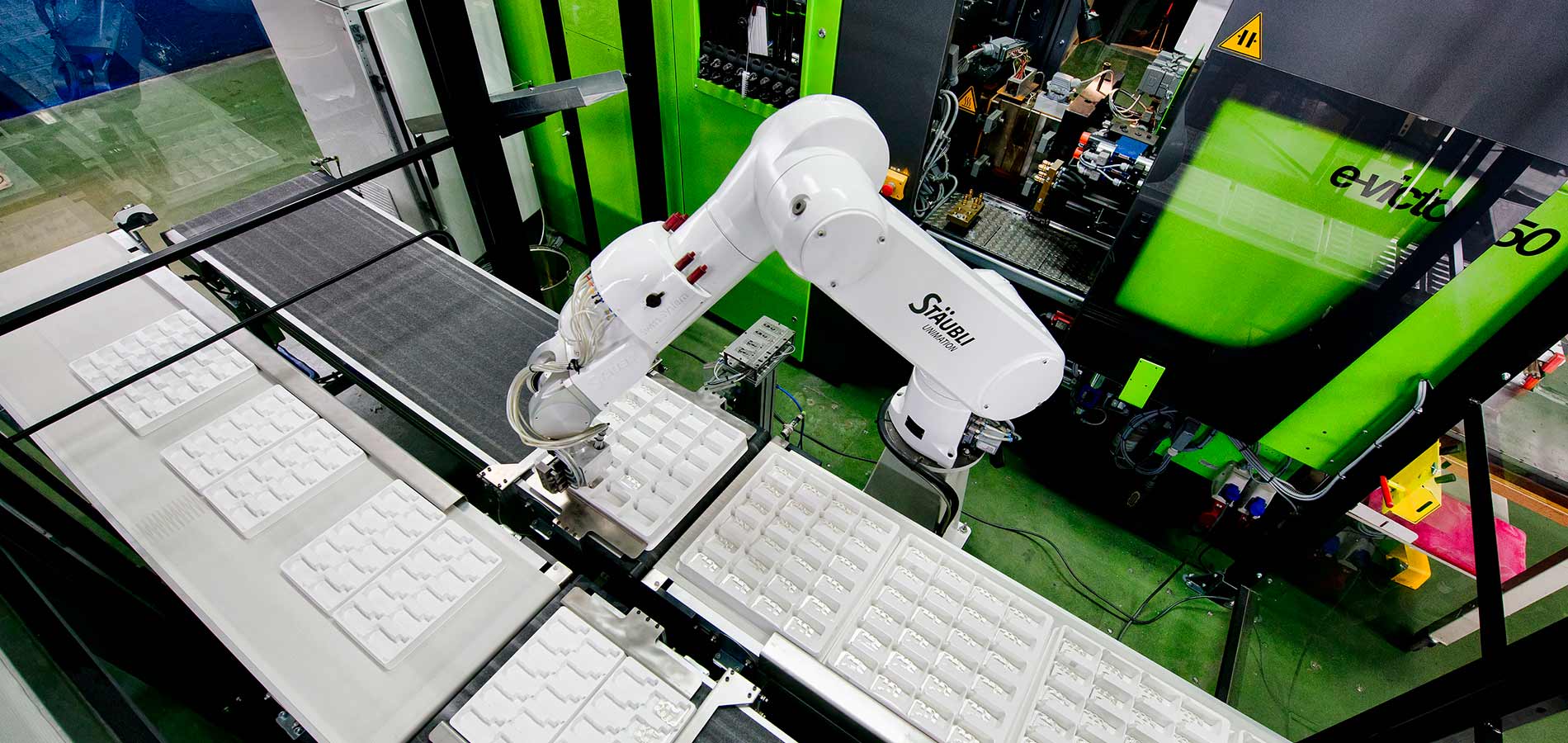Industry 4.0 – an engine for growth for Sweden
As a strong player in injection moulding, Liljas Plast Group is part of the industrial development that has occurred in various phases over the years. The fourth industrial revolution, Industry 4.0, is still in its infancy, but has already taken our productivity, sales, environmental work, collaborations and leadership to a whole new level. Here at Liljas Plast Group we are continually looking ahead, and we monitor ongoing developments very closely.
The four industrial revolutions
Industry 4.0
In recent decades, a fourth industrial revolution has emerged. Industry 4.0 takes the digital technology developed in the last few decades to a whole new level. Industry 4.0 connects the physical and the digital, enabling better collaboration and access between departments, partners, sales people, products and people. It gives business leaders better control and understanding of all aspects of their businesses, and enables them to leverage real-time data to increase productivity, improve processes and drive growth.
Industrial development is considered of great importance to welfare. The industrial sector represents a fifth of Sweden’s total economy, and is a significant engine for growth. It accounts for 72 percent of the commercial sector’s investment in R&D, and generates 77 percent of Sweden’s export revenues.
Liljas Plast Group understands the implications and significance of current developments during the fourth industrial revolution. We can achieve constantly increasing productivity by leveraging the opportunities that digitalisation brings.
Industry 3.0
In the late 1950s, a third industrial revolution began to emerge, as manufacturers began to incorporate more electronic technology and, ultimately, computer technology into their factories. During this period, manufacturers began to experience a change that placed less emphasis on analogue and mechanical technology and increasingly on digital technology and automation software.
Industry 2.0
During the early 20th century, the world underwent a second industrial revolution when steel and electricity began to be used in factories. The electricity enabled the manufacturers to increase efficiency and made factory machinery more mobile. During this phase, mass-production concepts such as assembly lines were introduced to increase productivity.
Industry 1.0
The first industrial revolution took place in the late 18th and early 19th centuries. During this era, manufacturing moved from being a manual task using human and animal power to more optimised work using water and steam power and other types of mechanised tools.
